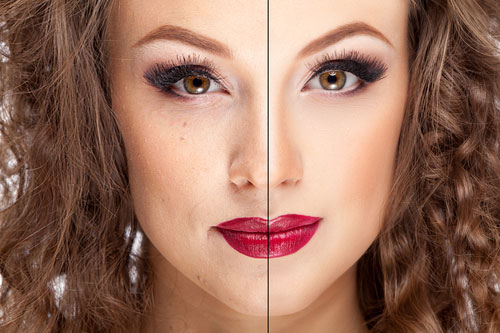When choosing a sunscreen, you've probably come across the SPF designation, but what does it really mean and how do you choose the right SPF cream? Understanding what SPF is and how it works will help you ensure that your skin is well protected from the harmful effects of UV rays. In this article, we'll go into detail about how the SPF factor works, how to choose products with different levels of protection, and how to use them correctly.
1. What is SPF and how does it work?
SPF (Sun Protection Factor) is a rating that indicates the skin's level of protection against ultraviolet B (UVB) rays. These rays cause sunburn and can lead to long-term skin damage such as premature aging and skin cancer.
How the SPF factor works
The SPF factor indicates how much longer you can stay out in the sun without risk of sunburn compared to if you didn't use sunscreen.
- A cream with SPF 30 for UV protection allows you to stay in the sun 30 times longer than without protection. However, this doesn't mean you don't need to renew your cream throughout the day.
- How SPF protects your skin from the sun: SPF only protects against UVB rays, which cause sunburn. For full protection against sun damage, it is important to choose products that also protect against UVA rays that cause skin aging.
Effect of SPF on UVA and UVB protection
Although SPF mainly indicates protection against UVB rays, many modern sunscreens offer broad spectrum protection, which includes protection against UVA rays. Broad spectrum creams protect the skin from all types of UV radiation, preventing both burns and premature aging.
- What SPF means in sunscreens: SPF 30 blocks about 97% of UVB rays, while SPF 50 blocks about 98%. The difference is small, but for people with sensitive skin or in high sun exposure, choosing a higher SPF is justified.
2. Difference between SPF 15, 30 and 50
Different SPF levels offer varying degrees of protection. To understand which SPF to choose, you need to consider both your skin phototype and your time in the sun.
Difference between SPF 15, SPF 30 and SPF 50
- SPF 15 blocks about 93% UVB rays and is suitable for short stays in the sun or for people with dark skin.
- SPF 30 blocks about 97% UVB rays and is a good choice for most skin types and everyday use.
- SPF 50 blocks up to 98% UVB rays and is suitable for people with fair and sensitive skin, as well as those who plan to spend long periods of time in the sun.
How to choose SPF for different skin types
When choosing an SPF, it's important to consider your skin type and propensity for sunburn.
- Sun protection with SPF 50 for fair skin is recommended for people with first and second phototype skin, who burn easily in the sun.
- For people with darker skin, SPF 15 or 30 may be sufficient, as their skin is more resistant to UV radiation.
Selecting the SPF level depending on the sun activity
If you spend a lot of time in the sun, play sports or swim, you should choose a water-resistant sunscreen with SPF 50 or higher. This will provide long-lasting UV protection, but it will still need to be renewed.
- How to choose a cream with SPF for outdoor activities: for hiking, beach vacations or outdoor sports, it is better to use creams with high SPF and water-resistant formula to maintain protection even after swimming or sweating.
3. How to use SPF products correctly
Even the most effective products with a high SPF will not protect you fully if they are not used correctly. It is important to know how and when to apply sunscreen to maximize its benefits.
How to apply SPF cream correctly
To achieve optimal protection, sunscreen should be applied liberally and evenly. Many people do not apply enough sunscreen, which reduces its effectiveness.
- Instructions for applying a cream with SPF to the face: don't forget areas that are often missed, such as the ears, neck and under-eye area. Use a special face cream with SPF to protect these areas.
- How much sunscreen to apply to the body: it is recommended to apply about 30 ml (approximately one full palm) of sunscreen to the entire body 15-20 minutes before going outdoors.
Skin protection with SPF reapplication
To maintain reliable protection, the cream should be renewed every 2 hours and after bathing, sweating or toweling off.
- How often to renew SPF for maximum protection: even water-resistant creams lose their effectiveness after 40-80 minutes in the water or intense activity, so they must be reapplied.
The importance of daily SPF use
Many people think that sunscreen should only be used in the summertime or when spending long periods of time in the sun. However, UV rays affect the skin all year round, even on cloudy days and in winter.
- Why use SPF daily: Even in the office or at home, your skin is exposed to UV light through windows. Therefore, it is important to use products with SPF all year round to minimize the risk of photoaging and age spots.
The SPF factor is a rating that determines the level of protection your skin has against ultraviolet rays. When choosing a sunscreen, consider your skin type and the conditions you are in. For everyday use, products with SPF 30 are suitable, while for active vacations in the sun or for people with sensitive skin - with SPF 50. Remember to apply the cream correctly and renew it throughout the day to keep your skin healthy and youthful.
Sun protection factor (SPF factor) in children
Particular care should be taken when choosing protective cosmetics for children. White-skinned children, who were born and live in the middle belt of Russia, the first days of being under the hot rays of the southern sun require double sun protection. However, it is difficult to keep track of the fact that the child did not burn, reaching after a cold winter to the gentle sea and hot sand, the child's body becomes red, any movement causes pain. Therefore, going on vacation, children's underwear should be chosen soft, made of natural cotton, which would easily absorb sweat, does not interfere with movements and does not scratch the delicate skin of the child.
How to apply
Recent studies have demonstrated that most consumers create SPF levels of 20% - 50% lower on their bodies than what is claimed on the product because they do not apply the product as thickly as they did when testing was done in the lab for this product.
If a sunscreen product is stable for three years, it does not require a product expiration date on the label. Therefore, consumers should discard sunscreens older than three years because the stability of such a product is uncertain. The labels of modern sunscreens have a recommendation on how long after application to wait without exposing oneself to sunlight. Some manufacturers determine this time based on the composition and components of the product. Cosmetics are one of the causes of wrinkleswe shouldn't forget that.
The term "sunblock" is no longer allowed on the labels of sunscreen products. This is to prevent consumers from being misled into believing that such a product provides complete protection from the sun's rays.







[...] You should choose a sunscreen based on your skin phototype. Simply put, if you have white skin (Types I and II) that hasn't seen the sun in months, you need a sunscreen with a protection rating of 35 to 50. People with darker skin (Types III and IV) can use a cream with lower protection, depending on the intensity of sun exposure and the time of day spent in the sun. Even people with darker skin (Types V and VI) who work in offices get sunburns during their first week in hot climates, unless of course they take protective measures. Whatever the color of your skin, a higher level of protection than that listed in the table is required for sunbathing for the first few days of exposure. And you want to know what the SPF factor is. What does it mean? [...]